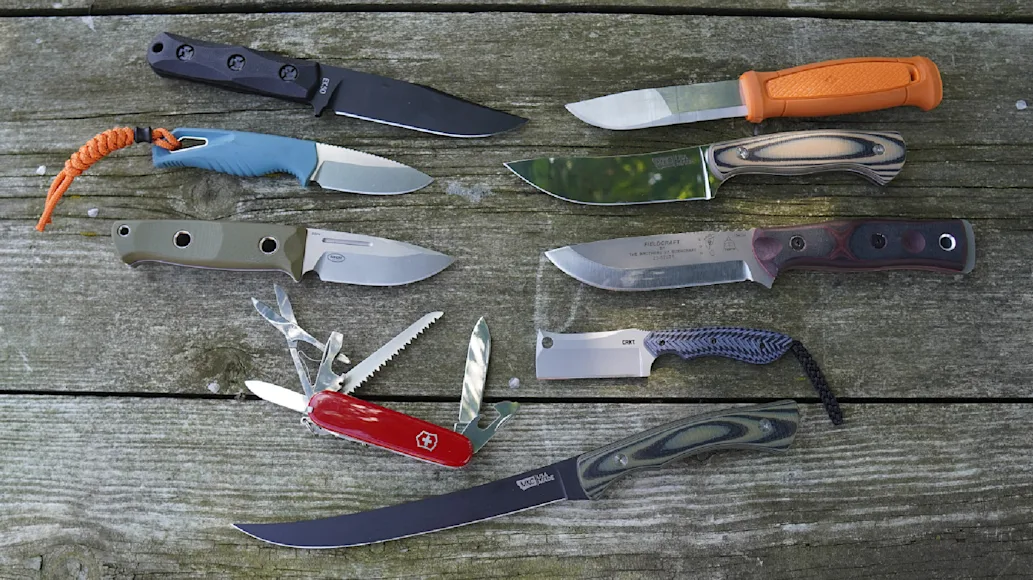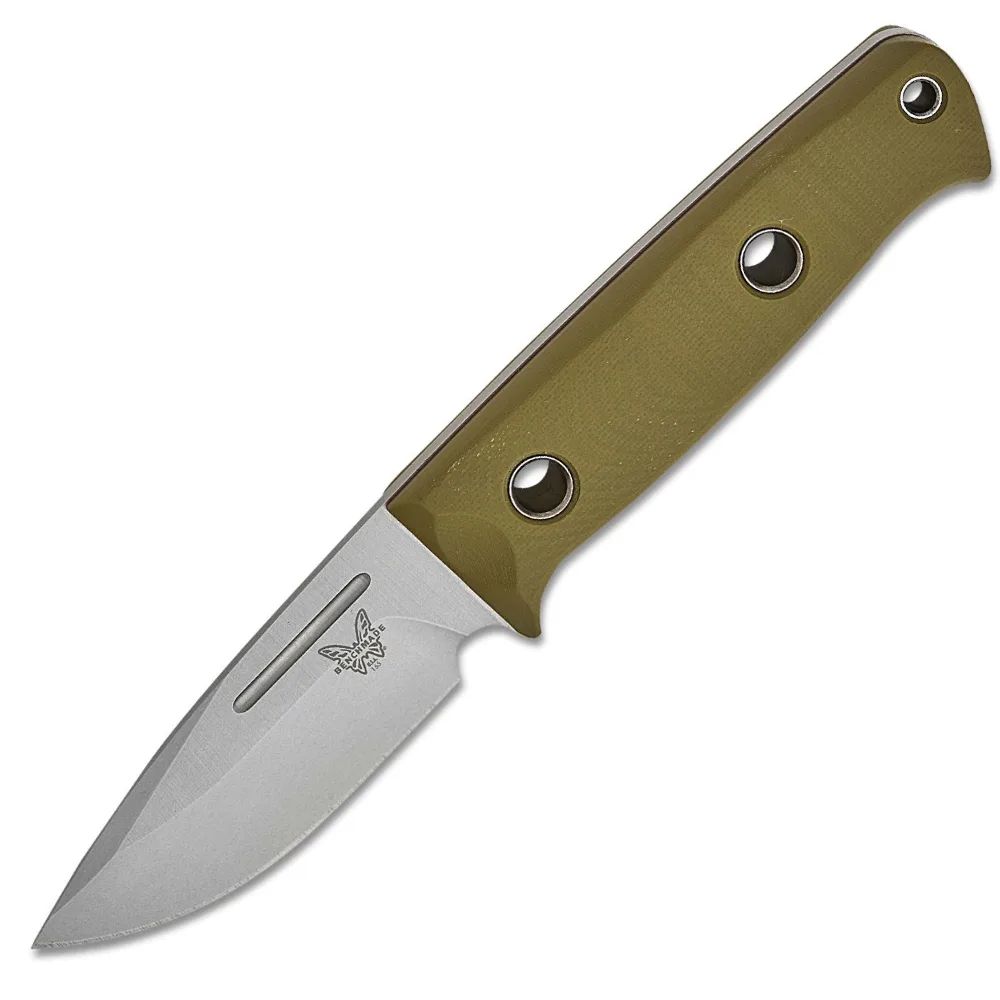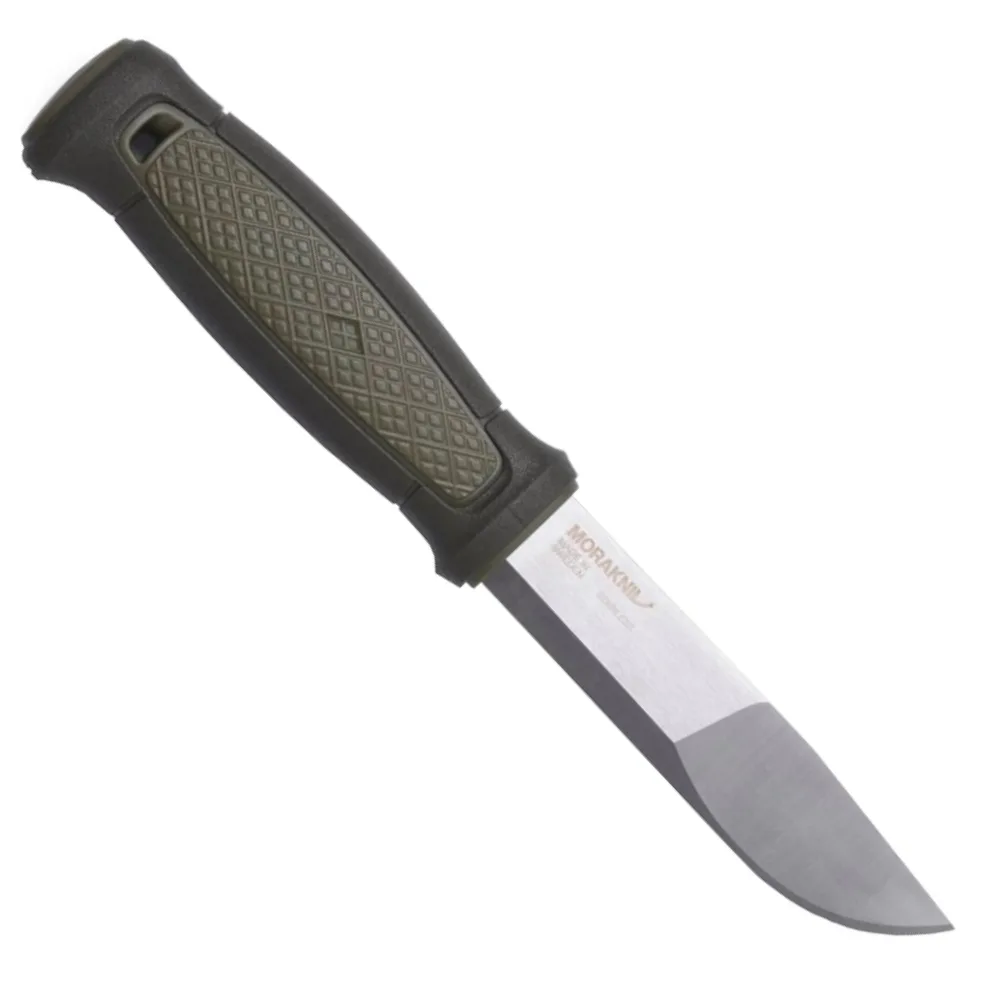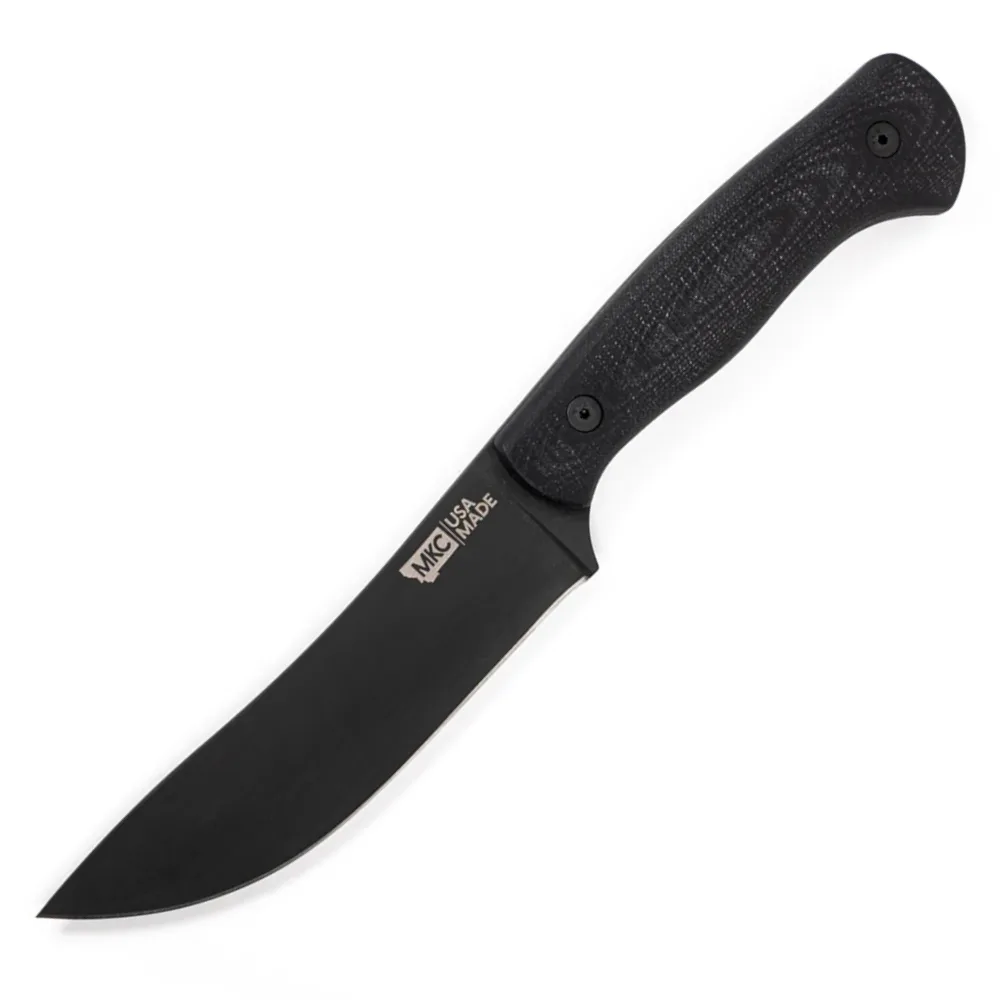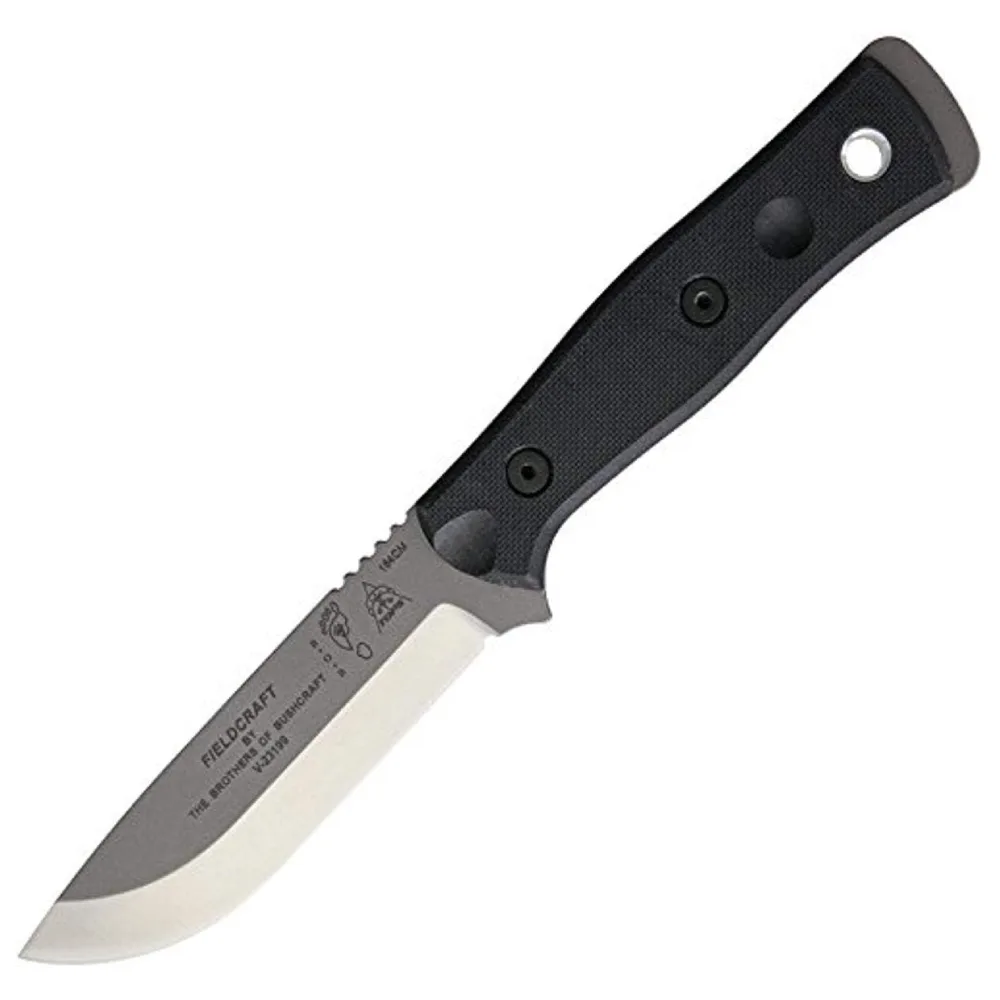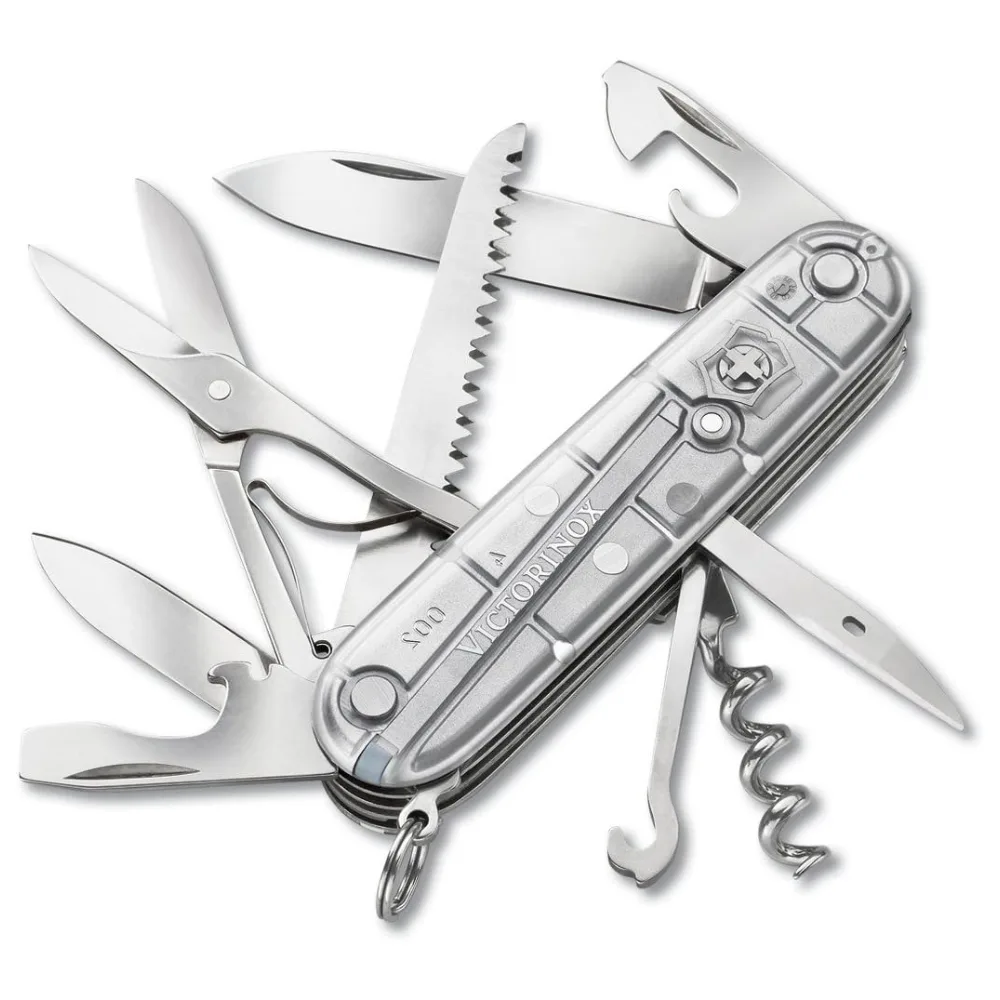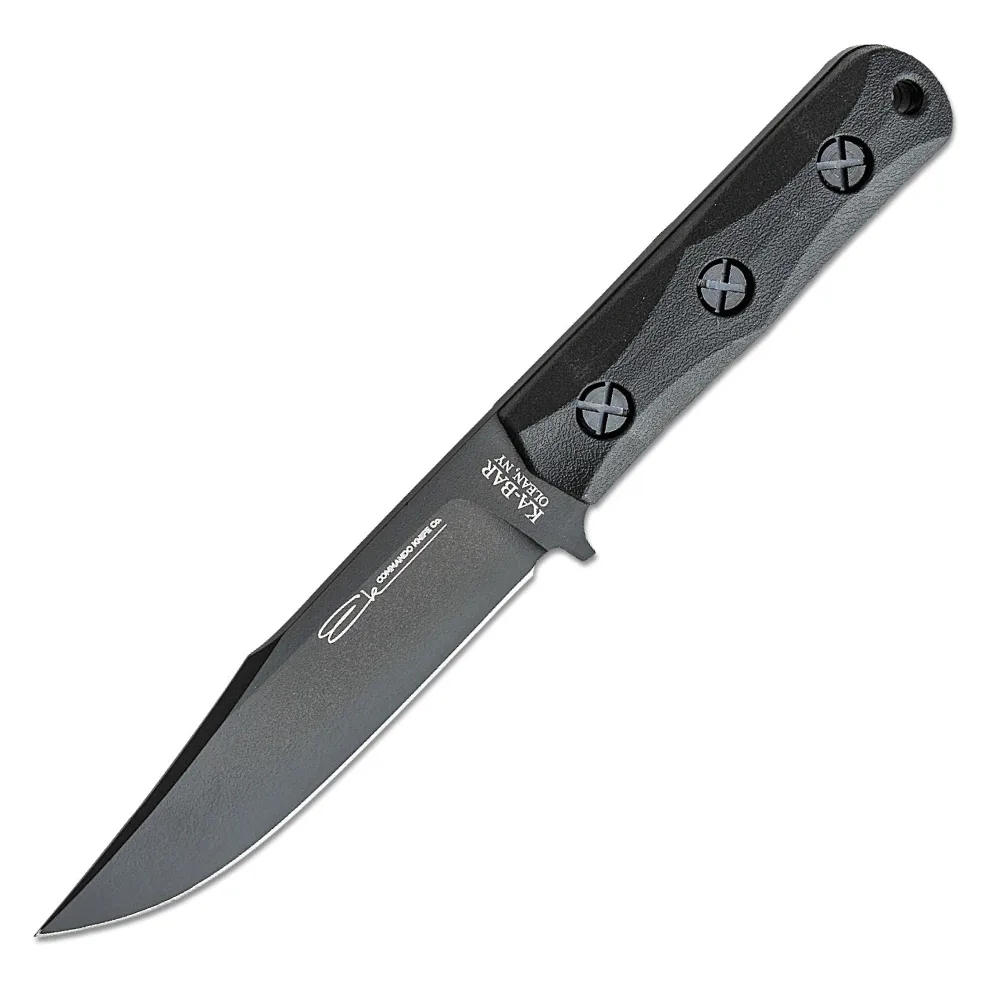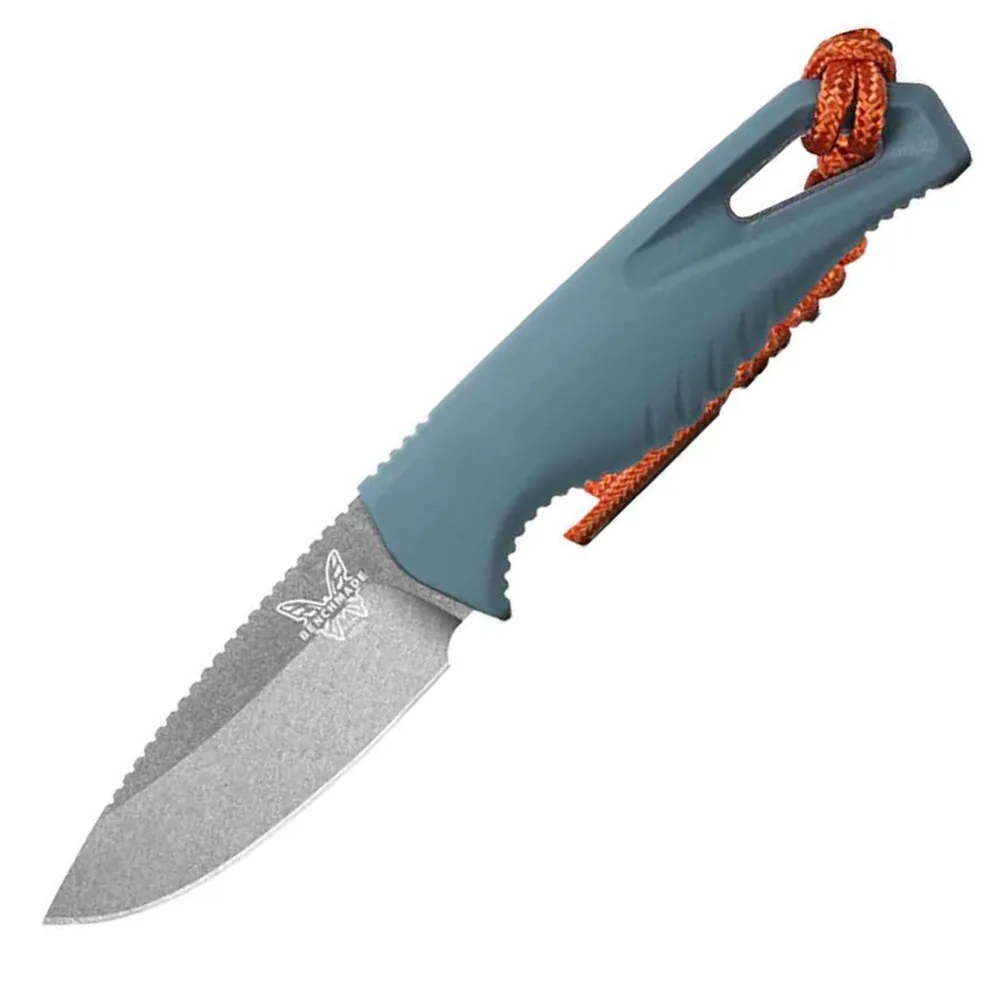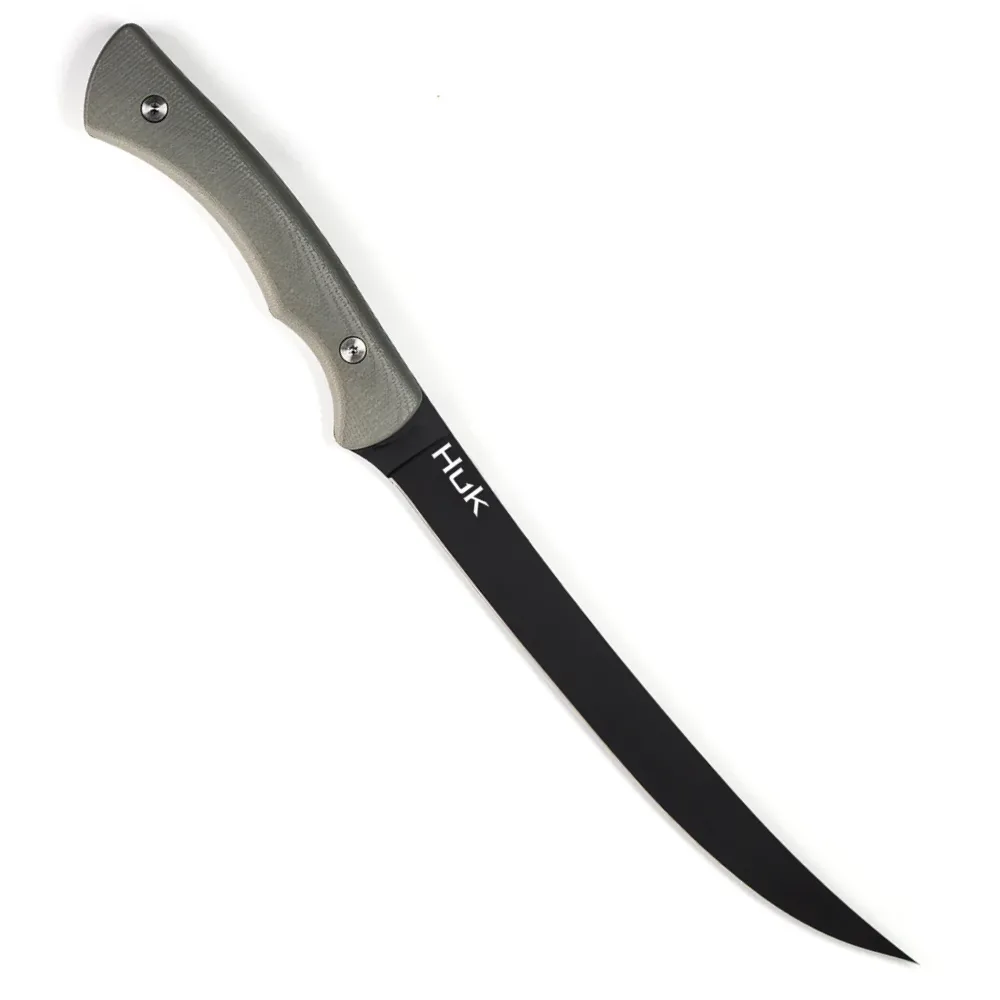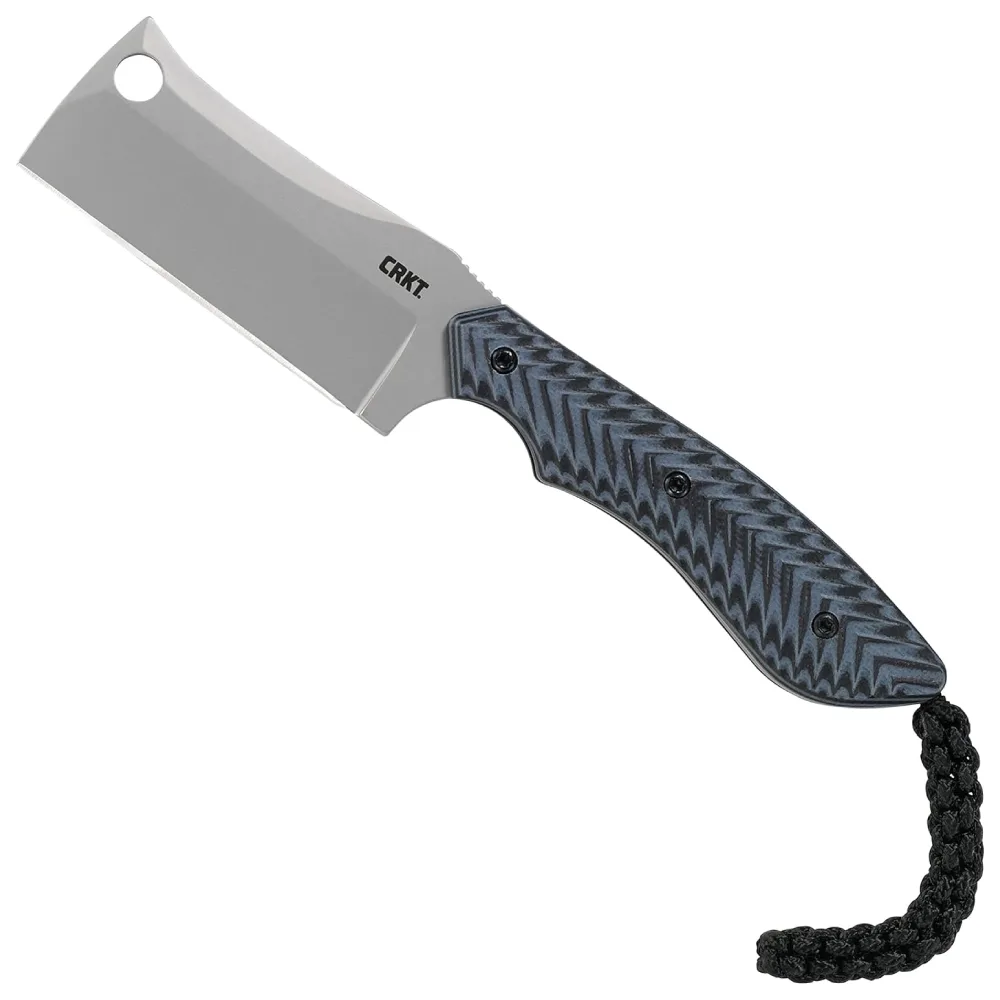Quality knives are essential for anyone who spends a lot of time in the outdoors. Whether carving, splitting wood, cutting fishing lines, or preparing food, the right knife makes a huge difference. There is a bevy of blades available today, which can make narrowing down the choices a real chore.
Every year, we test out the top outdoor knives for everything from hunting and fishing to camping and backpacking (and even survival) in real-world outdoor scenarios. After lots of chopping, slicing, and field dressing, we’ve found some clear favorites. These are the best outdoor knives being produced today.
Best Overall: Benchmade Mini Bushcrafter
Best Budget: Morakniv Kansbol
Best for Hunting: Montana Knife Company Stonewall Skinner
Best Survival: Tops Fieldcraft BOB Hunter
Best Folding: Victorinox Huntsman
Best for Camping: Ka-Bar EK Commando Short Clip Point
Best All-Purpose: Benchmade Intersect
Best for Fishing: Montana Knife Company Huk Flathead Fillet
Best for Cooking: CRKT S.P.E.C.
How We Tested Outdoor Knives
I tested all the knives on this list in real-world outdoor scenarios. I carved wood, cut paracord, and sliced cardboard to judge their sharpness and edge retention qualities. The cardboard test was especially helpful for judging edge retention as cardboard contains highly abrasive materials.
Because different outdoor activities call for different blades, I tested a variety of knife styles. Knives for filleting fish, for instance, require a much different shape and type of blade than a bushcraft or hunting knife. I also evaluated each knife on the following factors:
Blade Steel: It would be easy to fill a list exclusively with knives made of high-grade steel. I tried to find affordable steel types that offered good edge retention without breaking the bank.
Ergonomics: The best knives have a comfortable handle that won’t slip even if your hands are wet. I considered features like finger grooves and jimping that help finely control the blade and make it comfortable to maneuver.
Blade Type: I mainly looked for versatile knives with a straight edge and a flat or Scandi grind. However, I took into account a few other blade types and edge styles since some scenarios call for specialty knives.
Best Overall: Benchmade Mini Bushcrafter
Specs
Blade Material: CPM S30V
Blade Length: 3.38”
Overall Length: 7.58”
Weight: 6.53 oz
Pros
Versatile size
Extremely durable
Solid edge retention
American-made
Cons
Expensive
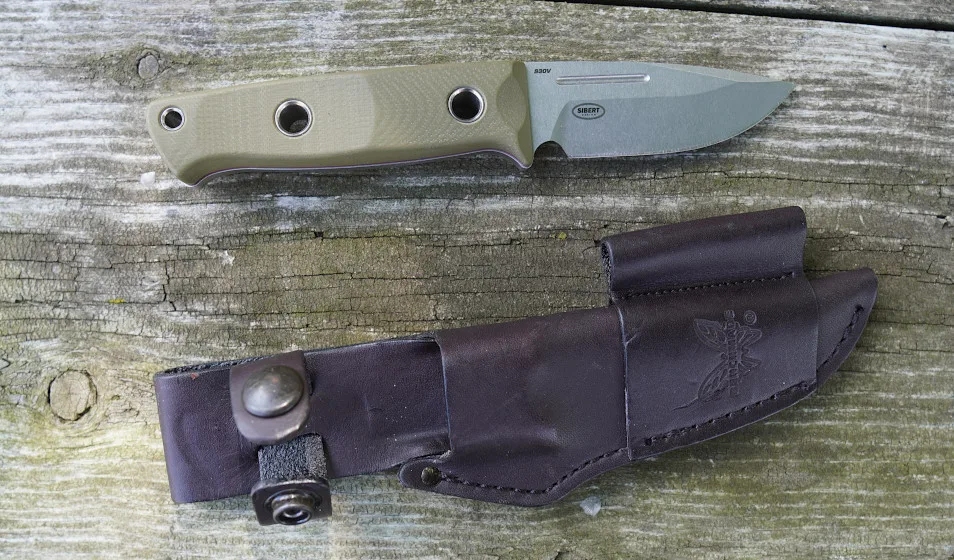
Versatility and reliability are the two best ways to describe the Benchmade Mini Bushcrafter. As the name suggests, this is a slightly downsized version of the original Bushcrafter knife. It’s the perfect size for field dressing a deer, cleaning fish, or performing various camp chores. During testing, the S30V steel proved to have excellent edge retention. I carved wood and ripped cardboard quickly with it. This knife also makes clean cuts through paracord and braided fishing lines. The compact size makes it a solid EDC knife, and I really like the included sheath, which is well-stitched and offers good retention.
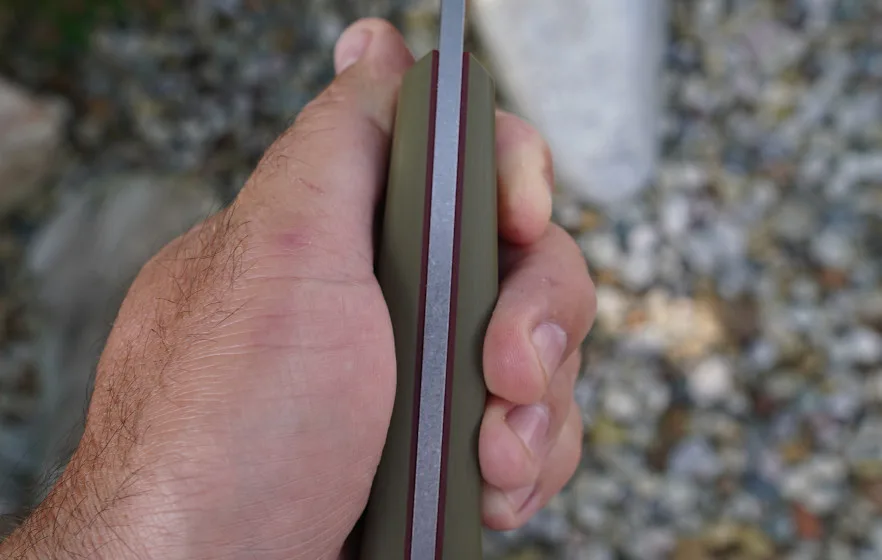
The main downside of this knife is that it’s costly, due to the premium-quality S30V steel and the fact that it's made here in the United States. However, the exceptional strength and quality are worth the higher price point. This is a solid knife suitable for a variety of outdoor tasks. It’s another reason why Benchmade remains one of my favorite knife brands.
Best Budget: Morakniv Kansbol
Specs
Blade Material: 12CR27 stainless steel
Blade Length: 4.29”
Overall Length: 9”
Weight: 3.52 oz
Pros
Lightweight
Double blade grind
More affordable
Cons
Not a full tang
Thinner blade
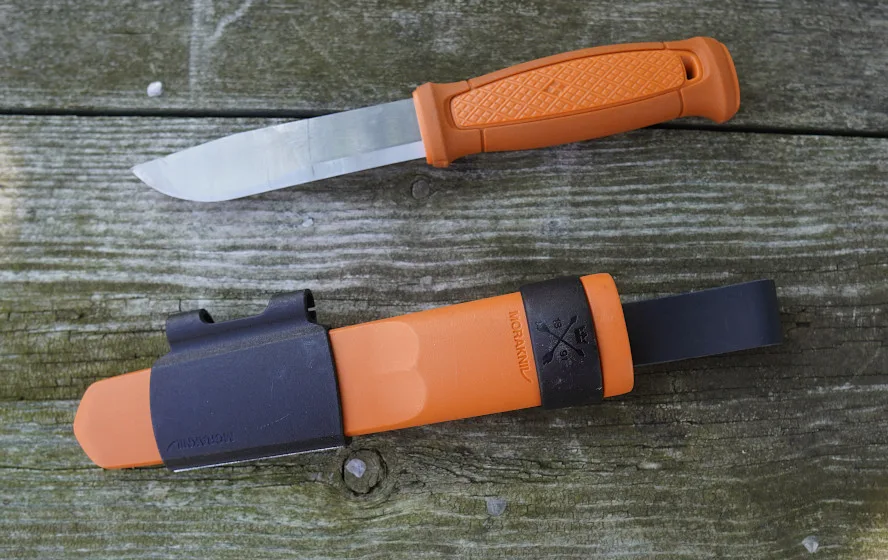
For only $35, the Kansbol delivers a lot of value. Its versatility is on par with some of my $200 and $300 knives. This knife has a unique combination grind that’s partially flat and partially Scandi. It excels at both light bushcraft and some food preparation. The Swedish Sandvick 12C27 steel has better edge retention than I expected. I've owned and used this knife for about three years, and I’ve only had to do light touchups on it. It weighs less than 4 ounces, so it’s practically unnoticeable on a belt loop or in a hiking pack.
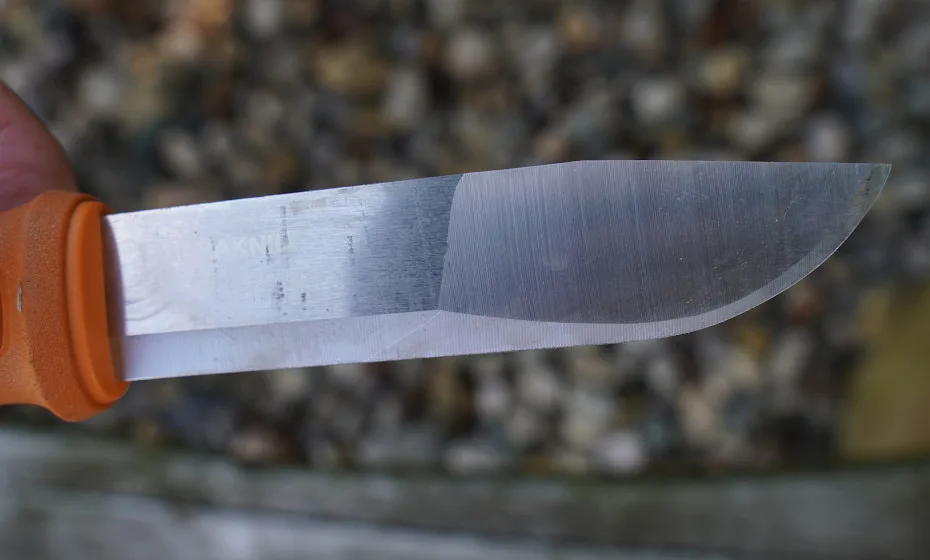
The only criticism I have about this knife is that it does not have a full tang, which limits its effectiveness at heavy tasks. However, given the budget-friendly price, I think that’s an acceptable trade-off. It’s rare to find knives of this quality that are also so affordable.
Best for Hunting: Montana Knife Company Stonewall Skinner
Specs
Blade Material: MagnaCut
Blade Length: 4.75”
Overall Length: 9.25”
Weight: 5.5 oz
Pros
Awesome edge retention
Ergonomic handle
Versatile blade tip
Made in the USA
Cons
Expensive
Hard to find in stock
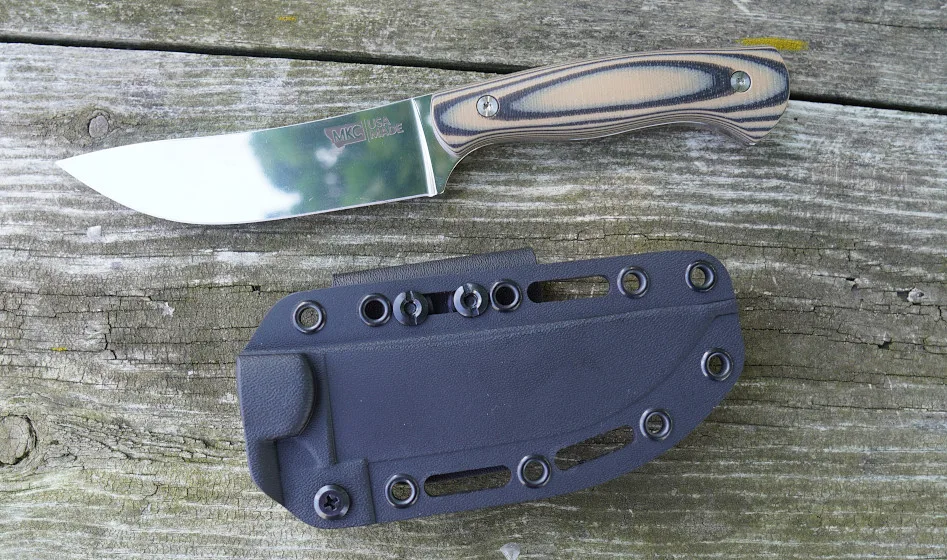
Montana Knife Company’s quality is superb, and it’s one of the reasons they are quickly becoming one of my favorites. The Stonewall Skinner feels very natural in my hands, thanks to the comfortable-to-hold G-10 handle. Usually, I like more texture on my handles, but the curves of this one are so easy to grip. In all the times I've used this knife, it's never once slipped or slid out of my grasp. I also like the sheath retention and the fact that MKC knives are American-made.
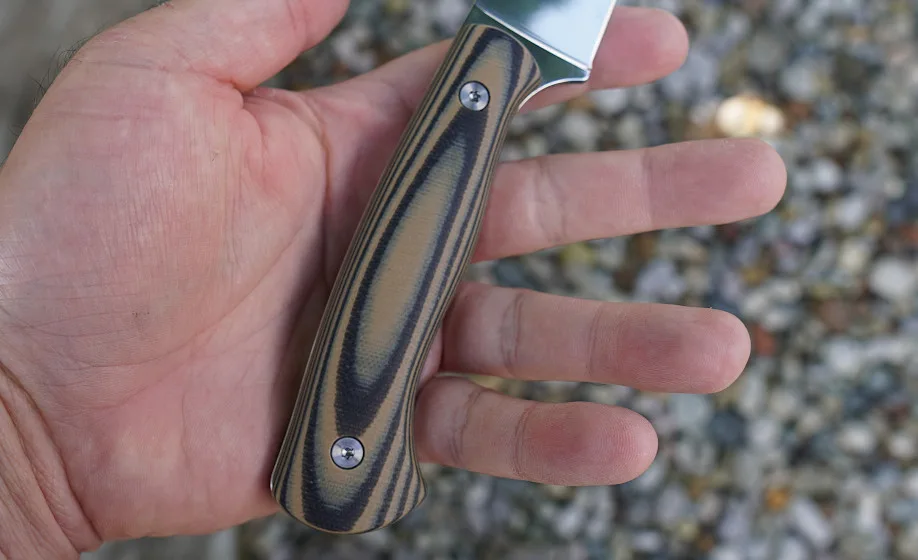
But what I love most about the Stonewall Skinner is the Magnacut stainless steel, which has fantastic edge retention capabilities. It blows away every other steel I’ve used. This knife is also better balanced than any other knife I’ve tested this year. The quality of the construction and the high-grade steel make this blade more expensive. It’s also hard to find in stock because it's so popular. But if you can find it, get it. Long-lasting, ergonomic, and super sharp, it's everything I could want in a hunting knife.
Best Survival: Tops Fieldcraft BOB Hunter
Specs
Blade Material: 154cm stainless steel
Blade Length: 4.75”
Overall Length: 10”
Weight: 10.5 oz
Pros
Great balance
Versatile grind
Good jimping
American-made
Cons
Scaling is a little slick
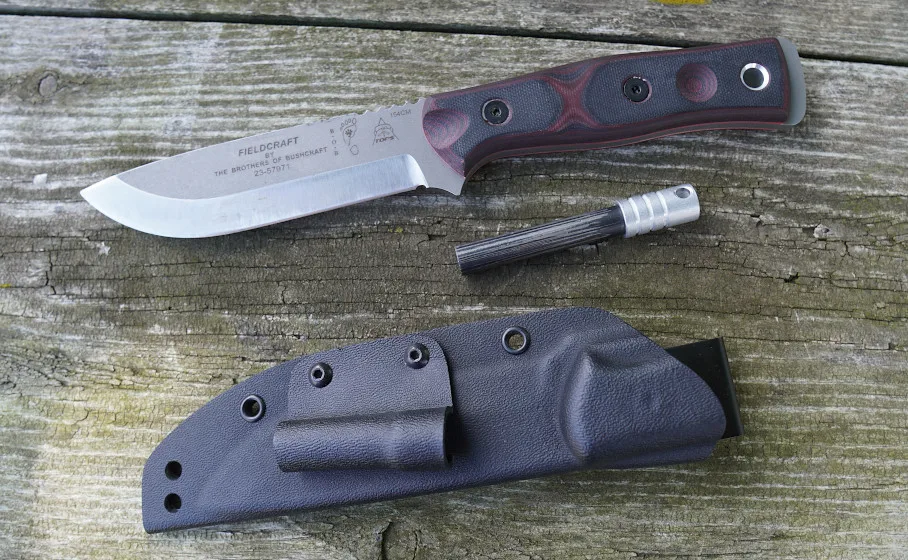
I’ve been singing the praises of the Tops Fieldcraft BOB (Brothers-of-Bushcraft) Hunter for a while. It was my pick for the best bushcraft knife, and my opinion remains unchanged. This is a beefy knife that can handle abuse-heavy wilderness projects, whether you're splitting wood for a fire or building a shelter for survival. During testing, I found it to be the best wood batoning knife I’ve ever used. It has an excellent Scandi grind that has handled every material I’ve thrown at it. I gutted a whitetail with this knife last year, further proving the versatility of the design.
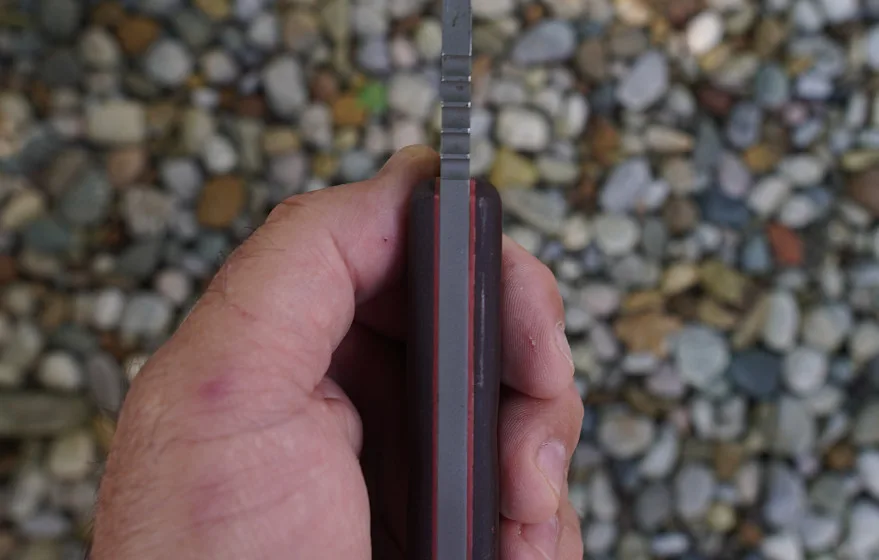
While I like the feel of the handle’s curves, the scaling is a little slicker than I’d like. However, I’ve never had it slip in my hands while using it. The nice jimping on the spine seems to make up for that. Tops has a durable winner with this knife. The fact that it’s made here in the States is just the icing on the quality cake.
Best Folding: Victorinox Huntsman
Specs
Blade Material: Martensitic
Blade Length: 2.75”
Overall Length: 3.58”
Weight: 3.50 oz
Pros
Versatile array of tools
Easy to maintain
Great for everyday carry
Cons
Stiff tolerances when new
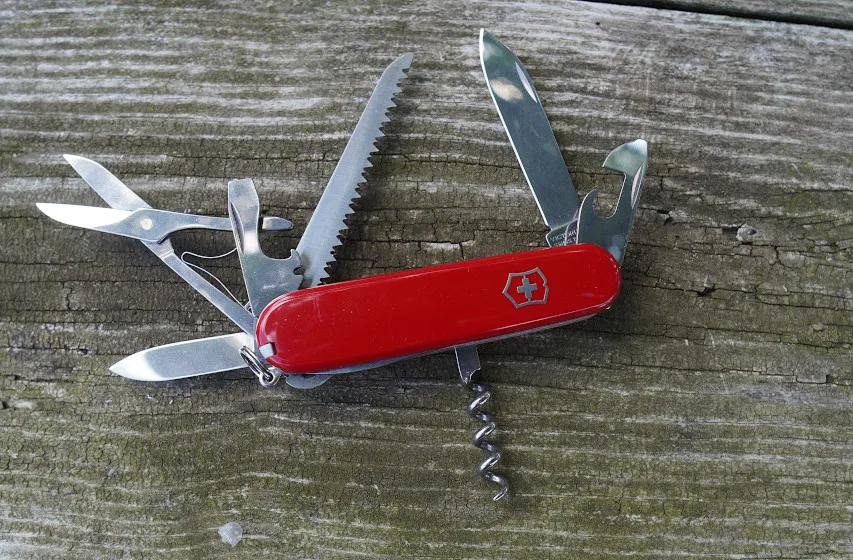
Few tools are more versatile for the outdoors than a classic Swiss Army knife. The Huntsman is a classic design that packs 15 tools into a single knife. Lightweight and compact with tons of uses, it's a great EDC option. I’ve been surprised by how often I even use the included tweezers and toothpick. Victorinox's blade steel is a softer material, which makes it incredibly easy to maintain. I can usually put an edge back on this blade in only a few minutes. The two blades proved surprisingly sharp in my edge retention tests. They ripped cardboard much better than I expected.
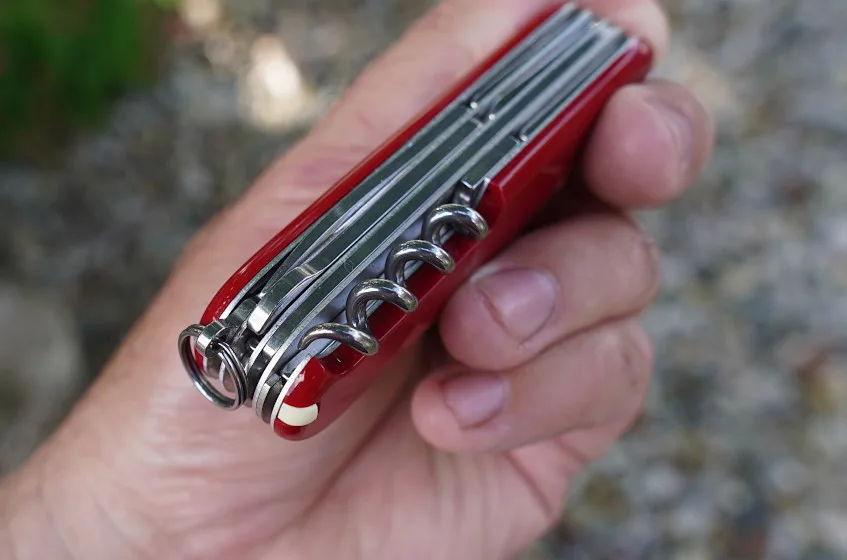
When I first got this knife, the tolerances on the tools—including the reamer, punch, sewing awl, and corkscrew—were very tight. It’s an excellent first knife for any outdoors enthusiast of any experience level (including kids), but the tools must be broken in a little first. That’s a minor complaint, especially given the affordable $55 price tag.
Best for Camping: Ka-Bar Ek Commando Short Clip Point
Specs
Blade Material: 1095 Cro-Van
Blade Length: 5.125”
Overall Length: 9.25”
Weight: 10.40 oz
Pros
Durable
Strong edge retention
Sharp factory edge
Cons
Handles are a little short
Scaling could be better
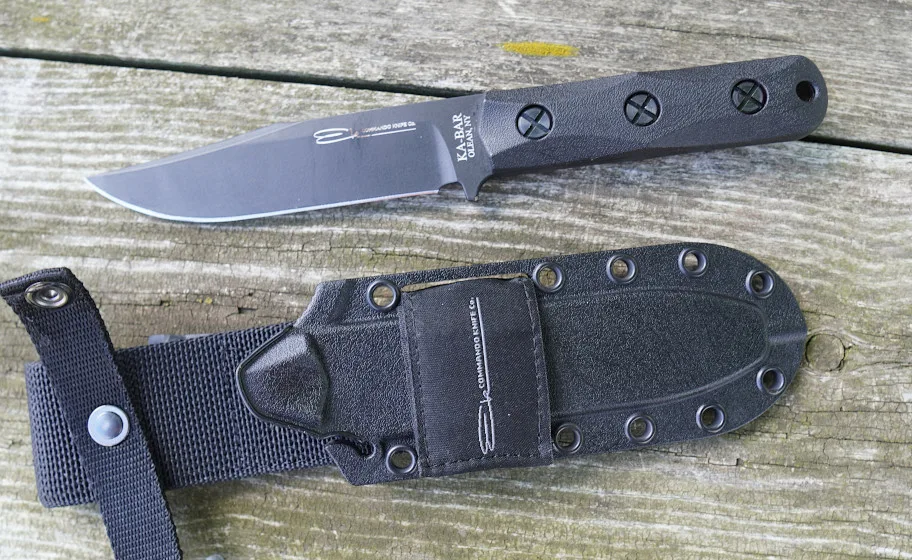
Ka-Bar makes some nice fixed-blade knives—like this one, which flies under the radar but is an excellent camping knife. The combination of 1095 Cro-Van steel and a clip point makes it ideal for camp tasks. While the blade is a little shorter than others we tested, I have successfully used it to split wood via the baton method. Ka-Bar put an excellent factory edge on this blade. I haven’t had to re-touch it since I got it. That's impressive, considering I subjected it to a grueling cardboard-ripping test. The blade is thin but beefy enough to put leverage on it. All the Ka-Bars I’ve tested in recent years feel bulletproof, and the Ek Commando is no exception.
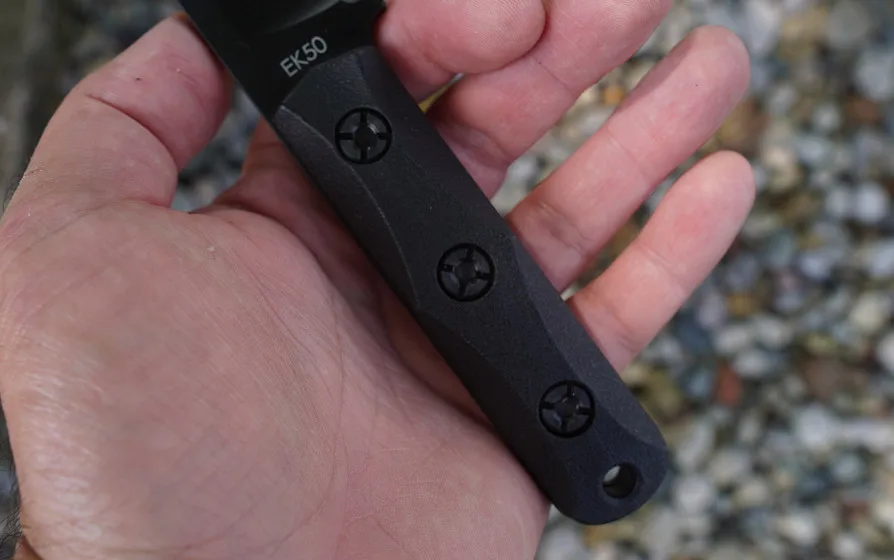
This knife would be even better if the handle were about half an inch longer. It would also benefit from G-10 or Micarta handles and some jimping. However, it’s a solid knife and a good choice for campers who want a do-all solution.
Best All-Purpose: Benchmade Intersect
Specs
Blade Material: CPM MagnaCut
Blade Length: 2.85”
Overall Length: 6.55”
Weight: 2.36 oz
Pros
Awesome edge retention
Excellent ergonomics
Lightweight
Cons
Higher price point
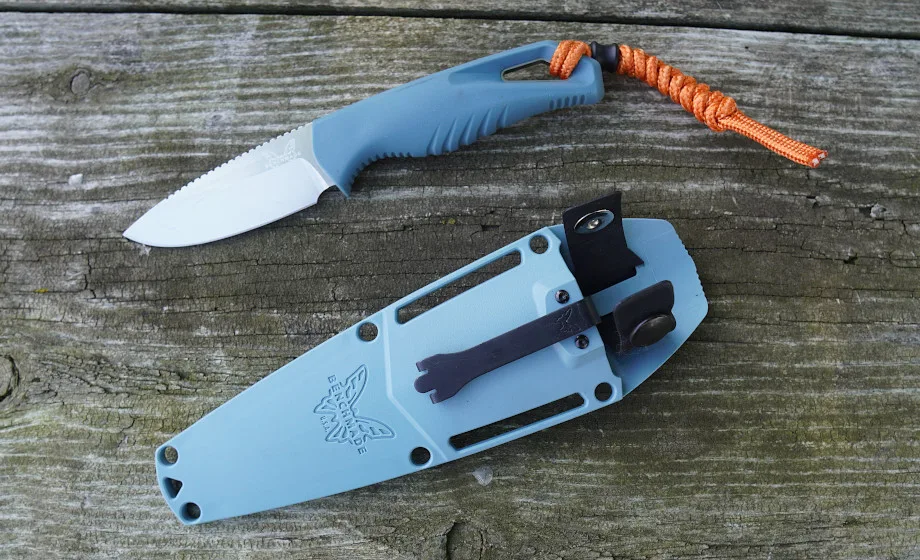
The Intersect is easily my favorite of Benchmade’s new water line. While the brand is mainly promoting these as fishing knives, I’ve found this specific knife versatile beyond that. The size is just what I need for field dressing whitetails and pronghorns, while the CPM MagnaCut steel offers excellent edge retention and corrosion resistance. I also love the ergonomics of this knife. Benchmade gave it a rubberized grip with excessive jimping. The top jimping runs past the midway point of the drop point. Applying pressure with my thumb gave me some extra leverage for tough-cutting jobs. And thanks to the finger groove and light jimping there, this knife is going nowhere in wet hands.
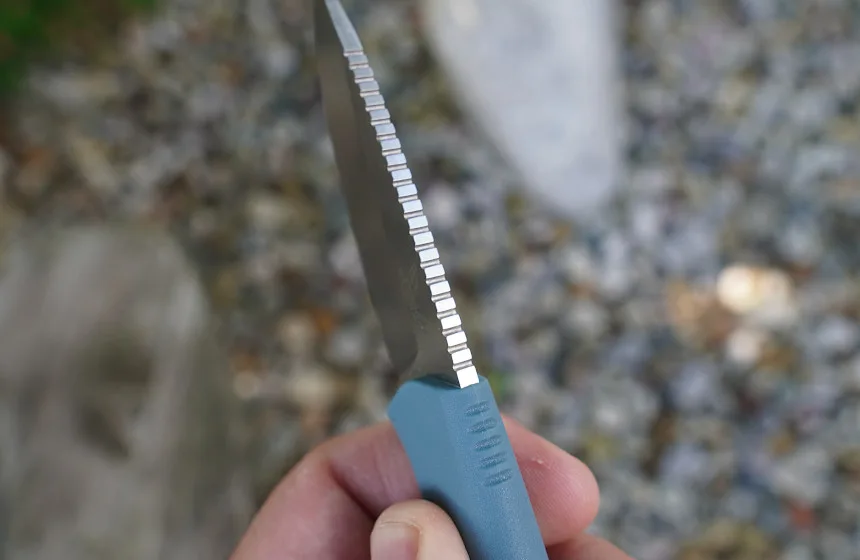
My only complaint about this knife is its $200 price point. It feels a little pricey, but I think the cost is primarily the MagnaCut steel. After using this knife all summer, I can confidently say this steel type lives up to the hype. It’s a worthy investment for anyone tired of sharpening their knives all the time.
Best for Fishing: Montana Knife Company Huk Flathead Fillet
Specs
Blade Material: MagnaCut
Blade Length: 7”
Overall Length: 12.5”
Weight: 4.6 oz
Pros
Great handle
Excellent corrosion resistance
Ultra-sharp
Cons
Availability
Sometimes hangs up in the sheath
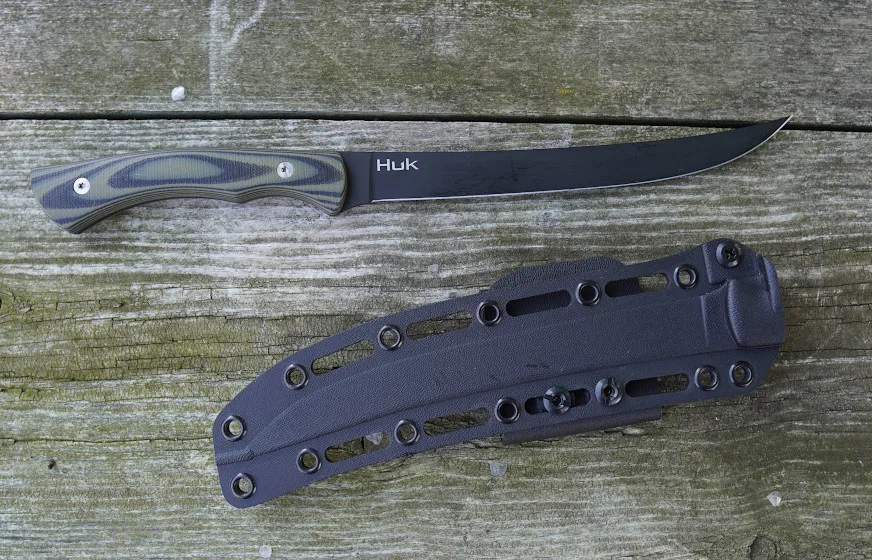
Montana Knife Company didn’t realize how popular their Flathead Fillet knife would be until it sold out almost instantly. (Note: Keep checking back as knives frequently get restocked.) After getting my hands on one of the knives—which is a collaboration with beloved fishing brand Huk—I understand why. The balance and ergonomics are excellent. This knife utilizes MagnaCut steel with a black Cerakote finish, which gives it corrosion-resistant qualities even in saltwater. The factory edge on this knife was significant. I found it sliced through fish fillets like butter. Thanks to the considerable amount of flex in the blade, I could bend it and put extra leverage on bony fish. Additionally, the G-10 handle has a nice texture. I loved how it handled when my hands were covered in fish guts and slime.
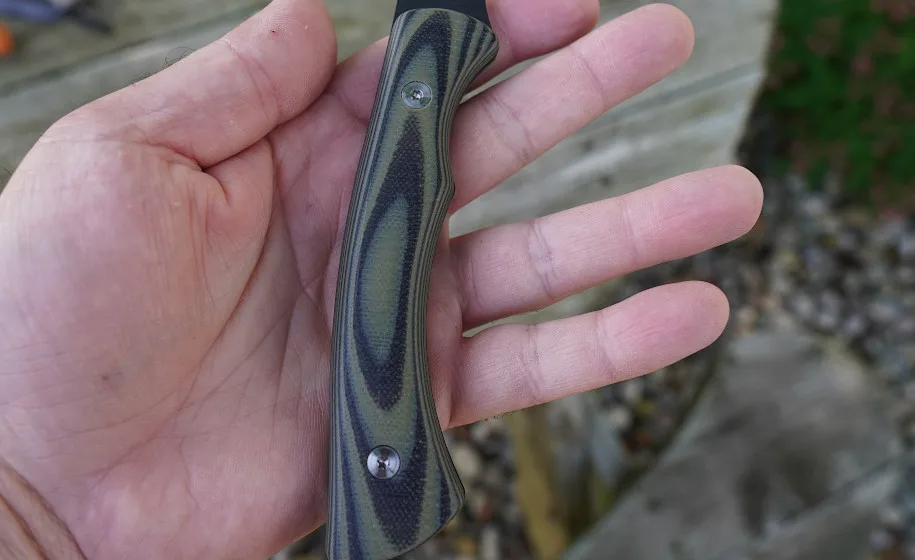
My one gripe with the design is that the knife sometimes sticks when placing it back in the sheath. It needs to be walked in slowly. High demand also makes obtaining this knife difficult. However, it’s well worth it to get your hands on one. This is the best fillet knife I’ve ever used.
Best for Cooking: CRKT S.P.E.C.
Specs
Blade Material: 8Cr13MoV stainless steel
Blade Length: 2.44”
Overall Length: 5.63”
Weight: 2.10 oz
Pros
Great handle
Compact size
Versatile carry options
Cons
Shorter handle might be hard to grip
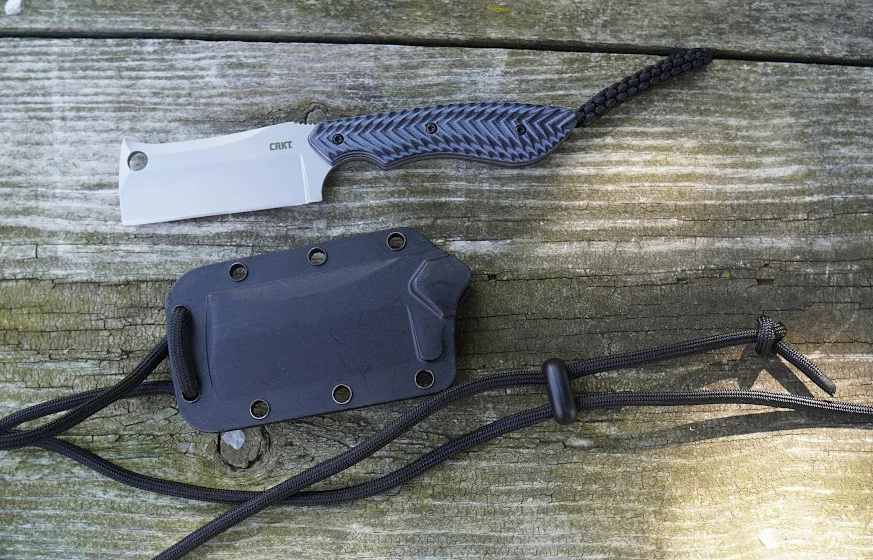
This knife is one of the more interesting ones in CRKT’s fixed blade lineup. It’s not often one sees a cleaver this compact. S.P.E.C. stands for “small pocket everyday cleaver.” As expected, this knife excels at light chopping and slicing tasks. I like it for helping prep smaller venison steaks while camping. The smaller size effortlessly tucks into a backpacking backpack or hunting pack, making it ideal for backpackers and backcountry hunters. I love the handle on this knife. CRKT gave it a G10 handle with aggressive scaling that’s easy to grip.
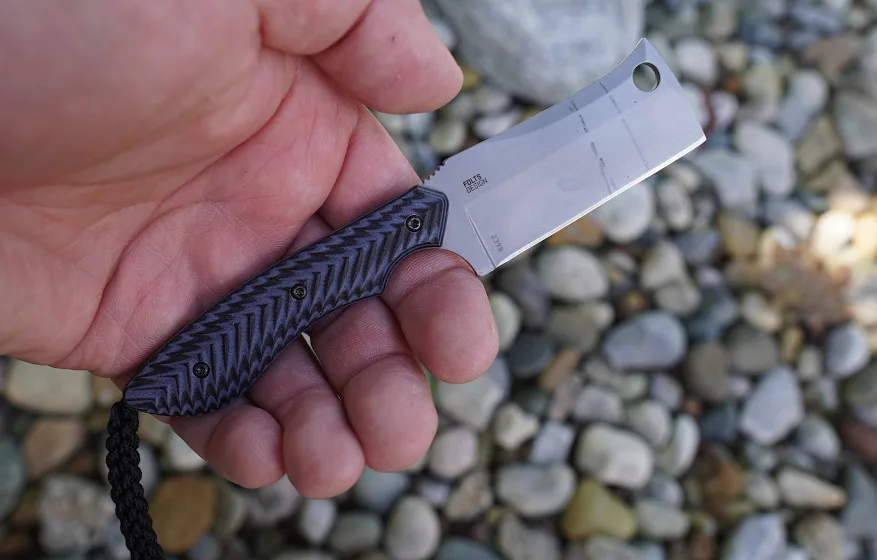
I also like the sheath on this knife. It’s versatile enough to allow for horizontal and neck carry, which makes it more versatile as an EDC option. The only real downside to this knife is that some users might find its compact size challenging to use. I wish the handle were about a half-inch longer. Other than that, this is a nifty little cleaver at an affordable price point.
What to Consider When Choosing an Outdoor Knife
Most outdoor knives are extremely case-use sensitive. It’s the first primary consideration for any knife. Something built to fillet fish isn’t suited for bushcraft, and vice versa. Strength and ergonomics are also significant considerations for any outdoor knife. Some other important factors include the following.
Blade Type
Drop-point blades are arguably the most popular for outdoor applications. They have the right shape and a great deal of strength. Clip-point blades, popular in Bowie knives, have a finer tip that’s handy for fine carving and precision cutting. Longer blades on fillet knives are great for carving and skinning game animals and fish.
Steel Type
The quality of the steel used in a knife usually accounts for a large portion of the price point. Cheap, bargain bin knives almost always use low-grade Chinese steel like 8Cr13MoV. While this steel can be very functional, it won’t hold an edge like S30V. In my experience, one usually gets what they pay for regarding overall knife quality. It’s often worth paying a little extra for something better, like 440C or D2 steel. Consider things like corrosion resistance and coatings when choosing steel. Wet environments call for a little extra protection to prevent rusting. Quality stainless steel or Cerakote coatings can help with that.
Folding vs. Fixed Blade
This choice is often a trade-off between strength and portability. Knives with a fixed blade are often full tang, meaning the steel extends down the full handle of the knife. That gives the blade exceptional strength for tasks like wood batoning. Conversely, a full tang also adds more weight. Folding knives usually have a slimmer profile, making them easy to tuck into a pocket or backpack. Again, this goes back to thinking critically about the best case use for each style before deciding.
FAQs
Q: What is the best material for outdoor knives?
It depends on how you plan to use the knife. High-carbon steels are popular because they are affordable and resistant to rust. Most are extremely easy to sharpen, making maintenance easy. I’ve recently become a big fan of MagnaCut steel for its combination of extreme corrosion resistance and edge retention.
Q: Which is better, G10 or Micarta?
For most outdoor knives, it’s hard to go wrong with either handle material. Preferences will vary for each person. It’s best to try both and see which you like better. Technically, G10 is the more robust material. Micarta is lighter, and can feel a little more natural, like wood. Perhaps more critical than handle material is texture. A good texture can help prevent the hand from slipping in wet environments. This is an important safety consideration, especially for tough jobs like skinning out an elk.
Q: What is the best angle for outdoor knives?
A knife with a 17- to 25-degree angle will work best in most situations. An angle of 30 degrees is usually reserved for heavier camp tools like axes. Lower angles usually work best for lighter knives, which are used mostly for food preparation.
Why Trust Us
For more than 125 years, Field & Stream has been providing readers with honest and authentic coverage of outdoor gear. Our writers and editors eat, sleep, and breathe the outdoors, and that passion comes through in our product reviews. You can count on F&S to keep you up to date on the best new gear. And when we write about a product—whether it’s a bass lure or a backpack—we cover the good and the bad, so you know exactly what to expect before you decide to make a purchase.

